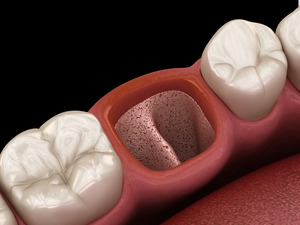Is Dry Socket Common After Tooth Extraction?
May 18, 2023

When your mouth is recovering after a tooth extraction, there are a few things you’ll need to be careful of. In particular, your dentist might warn you about the possibility of a dry socket. This particular complication can slow down healing while also causing quite a bit of pain. But just how common is dry socket? And how can it be prevented? It’s important to find out the answers to these questions before you have a tooth removed.
What is Dry Socket, and Why Should You Avoid It?
As you can probably guess from the name, dry socket is a condition that involves the socket that used to hold the tooth that was removed. Your body will create a blood clot in this area to protect it from bacteria until it has completely healed. However, if you’re not careful, your blood clot might become dislodged, and the result will be a dry socket.
Without the blood clot, the bone and nerves at the extraction site will be exposed to air, which can be very uncomfortable. Not only that, but a dry socket can also delay the healing process and increase the risk of infection.
How Common is Dry Socket After Tooth Extraction?
The good news is that dry socket is actually fairly rare. It’s estimated that only about 2 to 5 percent of tooth extraction patients will experience it. But just because an oral health issue isn’t common doesn’t mean you can afford to assume it won’t happen to you. It’s essential to follow your dentist’s aftercare instructions if you want to avoid dry socket and other complications while you’re recovering.
How Can You Minimize Your Chances of Developing Dry Socket?
Your gums will close after about 7 to 10 days, at which point you will no longer have to worry about dry socket. Until then, you can protect your blood clot by following these steps:
- Avoid using a straw for one or two days. The suction could pull the blood clot out of place.
- Do not use any products that contain tobacco, which can prevent the extraction site from healing properly.
- Instead of directly brushing the extraction site, keep it clean by using a warm saline rinse.
- Only eat soft foods; stay away from anything that’s particularly crunchy or tough.
The idea of developing a dry socket can be an alarming one, but chances are you’ll be able to avoid the issue altogether as long as you’re taking proper care of your mouth. Get in touch with your dentist if you would like further advice for dry socket prevention.
About the Author
Dr. Michael A. Putt went to Tufts Dental School, and he completed an Advanced Education in General Dentistry while he was in the Army. At Wayland Dental, he offers tooth extractions and a wide range of other procedures to help his patients protect their smiles. If you would like to schedule a consultation with Dr. Putt, visit his website or call (508) 651-0500.
No Comments
No comments yet.
RSS feed for comments on this post.
Sorry, the comment form is closed at this time.
